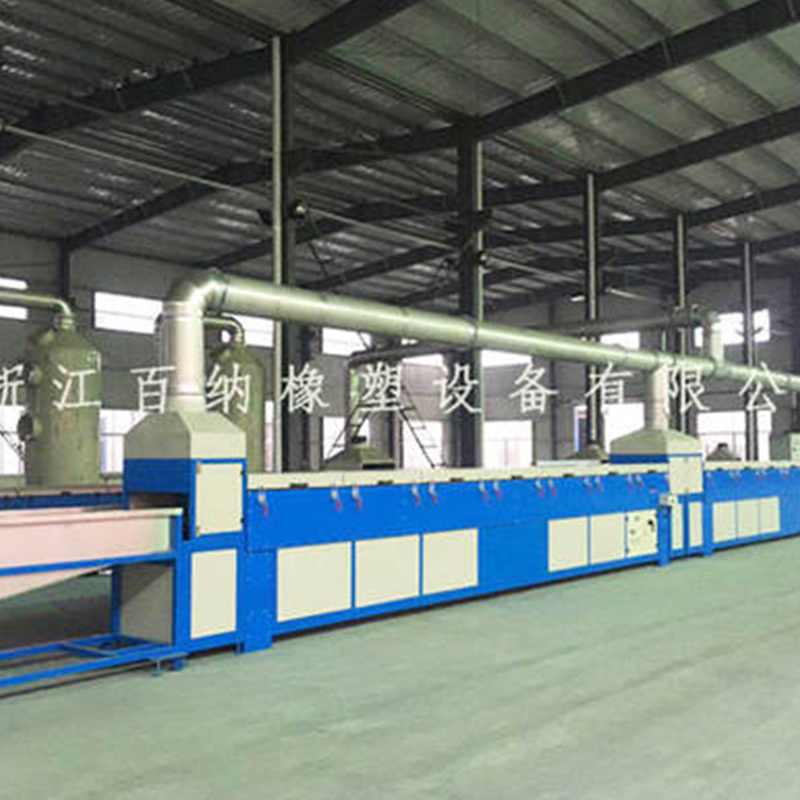What Precautions Should Be Taken When Using a Rubber Microwave Curing Oven?
A rubber microwave curing oven is a specialized piece of equipment used to vulcanize rubber products by applying microwave energy. Compared with traditional heating methods, it promotes internal heating of rubber materials, which can improve production efficiency and support continuous processing lines. However, because the equipment involves electromagnetic radiation, high temperatures, and automated handling, proper precautions are essential to ensure product quality and operational safety.

1. Operational Safety Precautions
Proper Safety Training
Operators should receive training on how microwave curing ovens work, including power controls, radiation shielding functions, and emergency shutdown procedures. Knowledge of potential hazards allows workers to respond correctly if abnormalities occur during production.
Avoiding Radiation Exposure
Microwave radiation is contained within the curing chamber by shielding structures. Before operation, users should ensure that doors, covers, and joints are tightly sealed. Regular inspections of the electromagnetic shielding system help reduce the risk of leakage. If damaged components are detected, the machine should be stopped immediately until repairs are completed.
High Temperature Handling
Rubber materials can reach elevated temperatures during curing. Workers should wear protective gloves and heat-resistant clothing when handling materials entering or leaving the oven. Unplanned contact with heated products or surfaces could cause burns, so clear procedures for product transfer are needed.
Emergency and Alarm System Monitoring
An efficient alarm system alerts operators to issues such as overheating, power irregularities, or conveyor jams. Emergency stop buttons must remain easily accessible. Operators should routinely test alarms and switches, ensuring quick response capability if unsafe conditions arise.
2. Equipment Maintenance and Inspection
Regular Cleaning to Prevent Build-Up
Rubber residues or additives may accumulate inside the curing chamber over time. Cleaning schedules help avoid contamination and maintain efficient heat transfer. If residues are left unattended, odors or smoke could develop, affecting both safety and production stability.
Inspection of Conveyor Systems
Continuous microwave curing ovens often utilize belt conveyors to move products through the chamber. Misaligned or worn belts may cause uneven heating or product damage. Lubrication and tension checks extend conveyor life and reduce downtime.
Checking Microwave Generators
The magnetron or generator is an essential part of the curing oven. Reduced output or unstable frequency can insufficient curing. Maintenance personnel should track generator performance indicators and replace aging components as needed. Monitoring cooling fans and air circulation inside the generator compartment also helps prevent overheating failures.
Electrical System Care
Because high-frequency power is involved, the electrical system must be handled carefully by qualified technicians. Periodic inspection of wiring, grounding, and insulation helps prevent short circuits and equipment malfunction. Power should always be disconnected before performing repairs or internal cleaning.
3. Product Quality and Process Control
Uniform Material Placement
Microwave curing works by penetrating the rubber material and heating from within. Uneven material thickness or incorrect spacing can result in inconsistent curing. Operators should arrange materials properly on the conveyor and avoid stacking items too densely.
Monitoring Temperature and Curing Time
Although microwaves heat rubber differently than external heating methods, precise control of temperature and exposure time remains important. Excessive curing can cause brittleness or surface defects, while insufficient curing may leave products weak and unstable. Automated control systems should be set according to material specifications and continuously monitored for deviations.
Moisture Management
Rubber compounds may contain moisture that can vaporize under microwave heating, bubbles or surface marks. Drying materials in advance or adjusting processing conditions helps improve final product smoothness and stability.
Quality Inspection After Curing
Visual checks, hardness tests, and dimensional measurement should be part of the routine after curing. Defects identified early allow operators to adjust production parameters quickly and avoid large batches of waste.






 English
English 中文简体
中文简体 русский
русский



